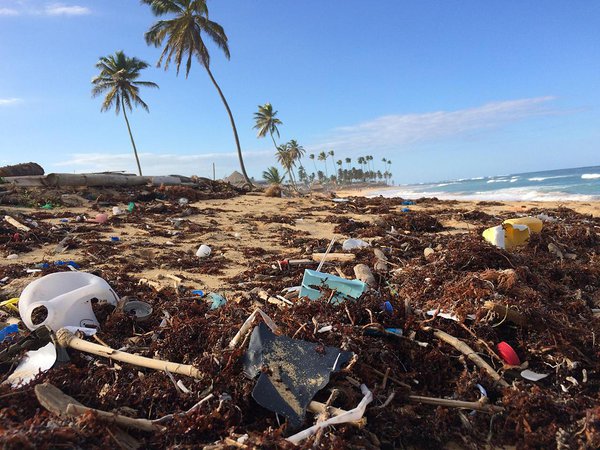My thoughts on biodegradable cups
During the summer I visited several bars, which had started using biodegradable plastic cups. Initially I cheered – this means that the movement towards sustainability is gaining popularity, right? If establishments are willing to increase costs in order to reduce the amount of waste they create, then surely this is the beginning of a massive shift in societal attitude towards an eco-friendly lifestyle. Well, in this case, progress is not as black and white as it seems.
Let’s first cover the difference between regular and biodegradable cups. In appearance, a biodegradable cup for cold drinks is no different than a cup made of oil-based plastic. You can check the composition of your packaging for yourself by looking at the bottom of any plasticware that you have. You will find a number inside a triangle made of arrows. This is called a resin identification code and the number ranges from 1-7. Each number corresponds to a different material. For regular plastic cups the code will be 5, which corresponds to polypropylene. Polypropylene is a strong thermoplastic polymer, which acts as a barrier to moisture and is relatively resistant to heat. Although it is tough and resistant to many solvents, it can be recycled. On the other hand, if it ends up in a landfill it can take up to 20 years to completely decompose.
Biodegradable cups, on the other hand, are made of polylactic acid (PLA). It is typically derived from plant sugars, such as corn starch, sugar beet or sugar cane. For PLA cups and biodegradable packaging in general to degrade faster than their oil-based plastic counterparts, they need to end up in the correct waste stream, coming into contact with water, heat and oxygen. Industrial composting is the established method for metabolising biodegradable waste, wherein the plants control temperature (50-65*C), humidity and aeration, leading to a quick and safe composting process. According to the European industrial standard EN 12324, for packaging to label itself biodegradable, 90% of it must degrade in a commercial composter within 180 days and not leave behind any toxic residues.
Back to the beginning. Having visited several bars and restaurants, which positively advertise their use of biodegradable cups, it seemed that these establishments are willing to increase costs to reduce municipal waste. However, very few bars or restaurants sorted their biowaste, meaning that it all ended up in the same general waste containers.
Biodegradable packaging should not be placed in standard recycling bins made for the collection of paper, plastic and metals, since food waste harms the mechanical recycling process. Neither should it be placed amongst general waste, which ends up either incinerated or in landfills. If incinerated, bioplastics generate energy and several studies have shown that they generate more heat than paper. So that isn’t terrible. However, although compostable bioplastics do not produce methane, landfills are designed to be anaerobic and compostable bioplastics are not designed to degrade in these conditions. If PLA cups end up in the same waste container as polypropylene cups, then we have wasted a lot of time and effort on practically nothing.
Developing bioplastics is definitely a step in the right direction. The infrastructure is present to recycle both, oil-based plastic and plant sugar-based plastic, yet the lack of regulations in this sector means that the packaging may not end in the correct waste stream. Local governments should take the initiative and instigate a recycling programme that would include clearly labelled containers and bags to sort different types of waste. This, alongside an easy-to-comprehend educational programme that would span all the different mediums of media, would pave the way to the most effective waste management systems. On a positive note, the Tallinn City Council has amended a law to include a clause that will ban the use of single use plastic in public events and obligates event organisers to provide trash separation for general, paper and biodegradable waste, effective October this year.
Sources:
http://www.nawp.com.au/renewable-nature-based-sourcing/biodegradability-en-13432-astm-d6400-as4736/
https://greensxm.com/composting-pla-plastic/
https://www.thebalancesmb.com/an-overview-of-polypropylene-recycling-2877863
https://www.natureworksllc.com/What-is-Ingeo/Where-it-Goes/Incineration
https://www.bioplastics.org.au/resources/faq/#toggle-id-16
https://www.err.ee/917890/tallinna-volikogu-otsustas-avalikel-uritustel-keelata-plastnoud
 lines
lines 
